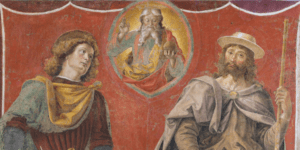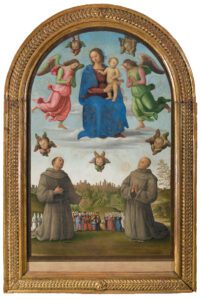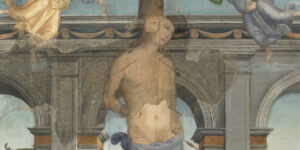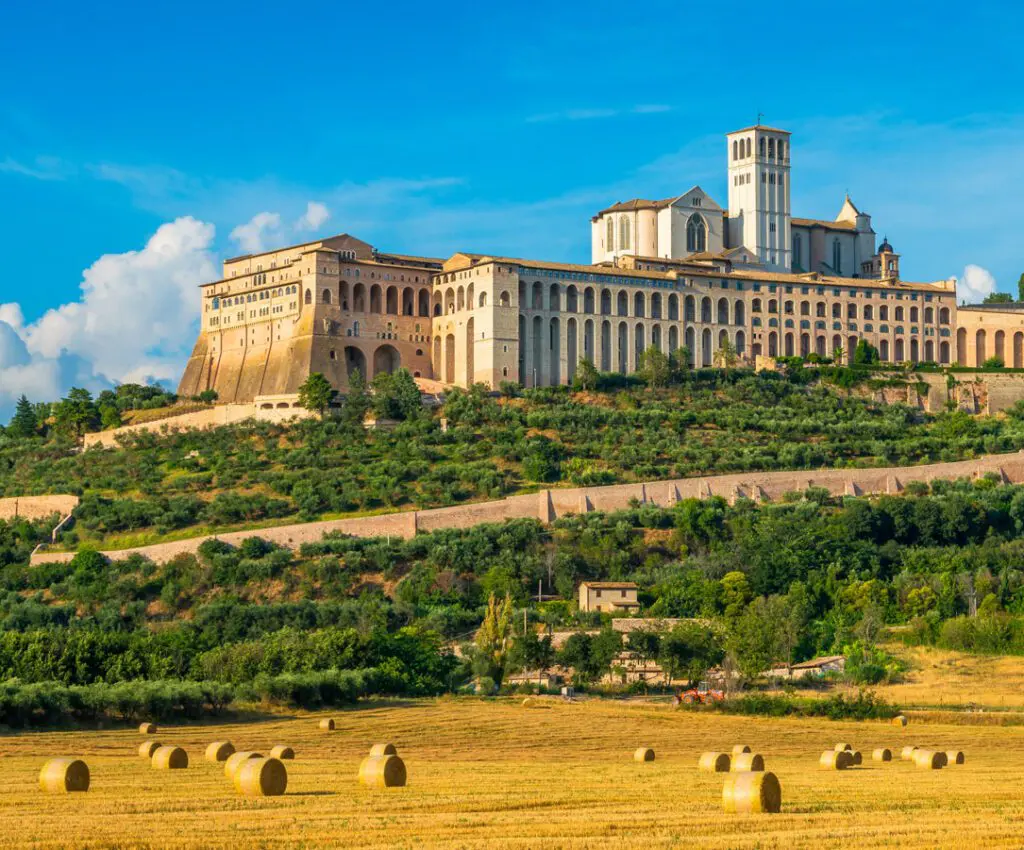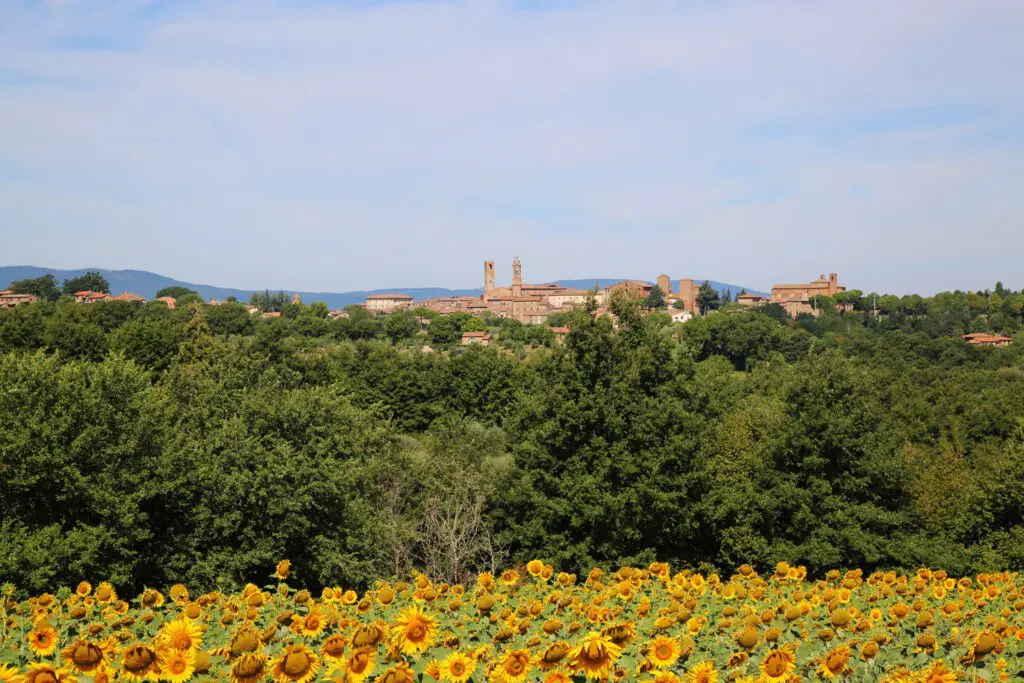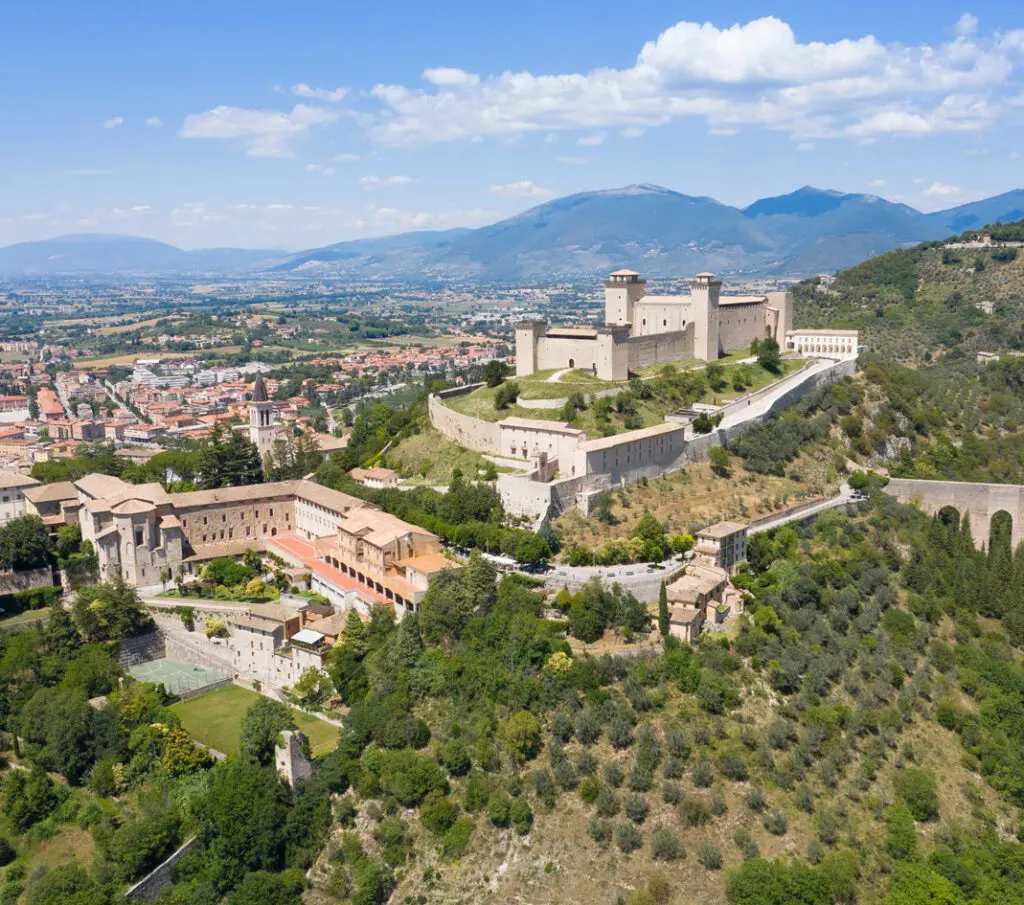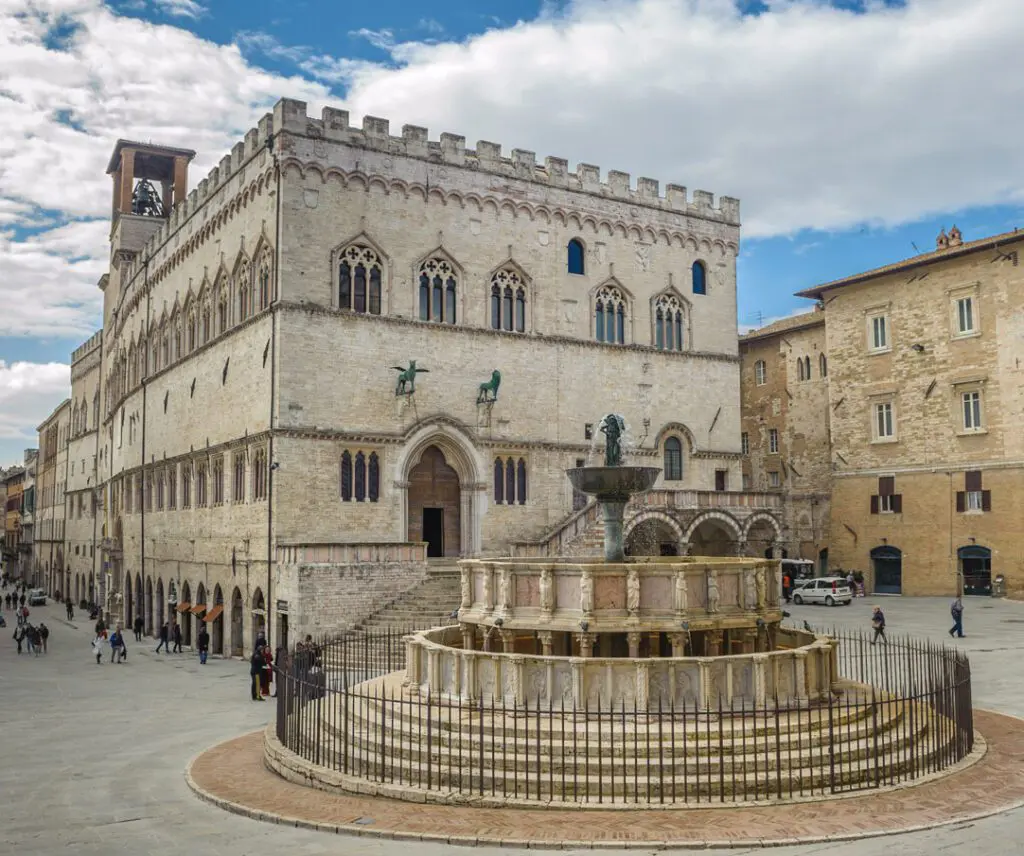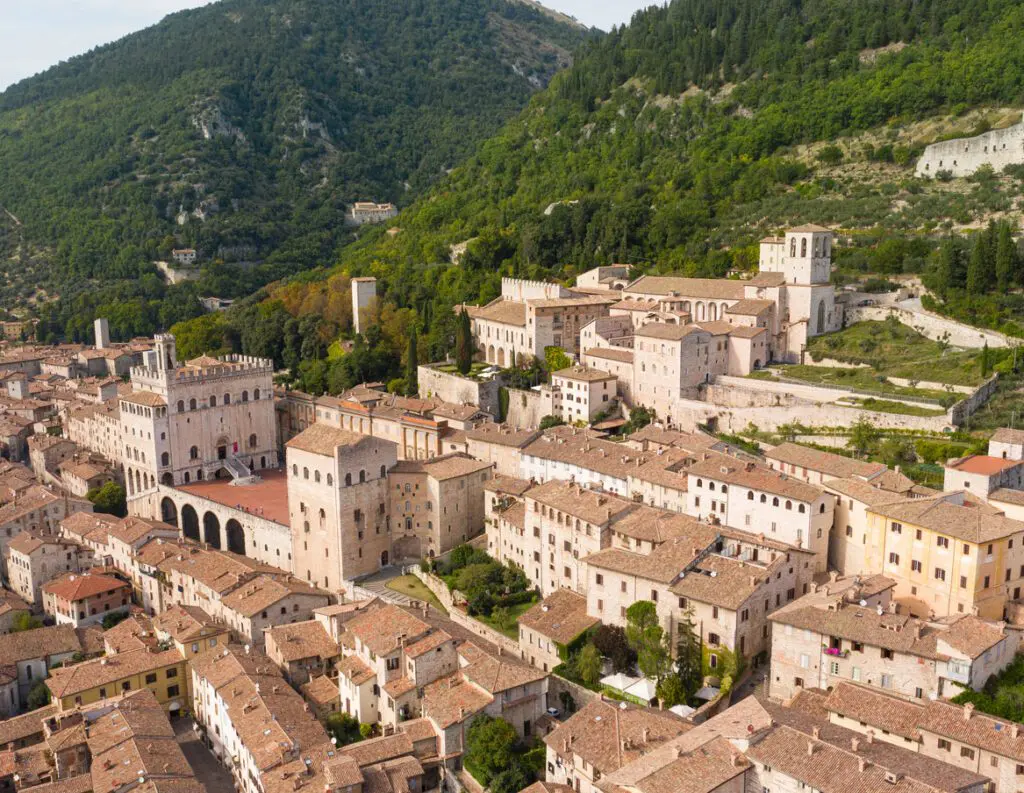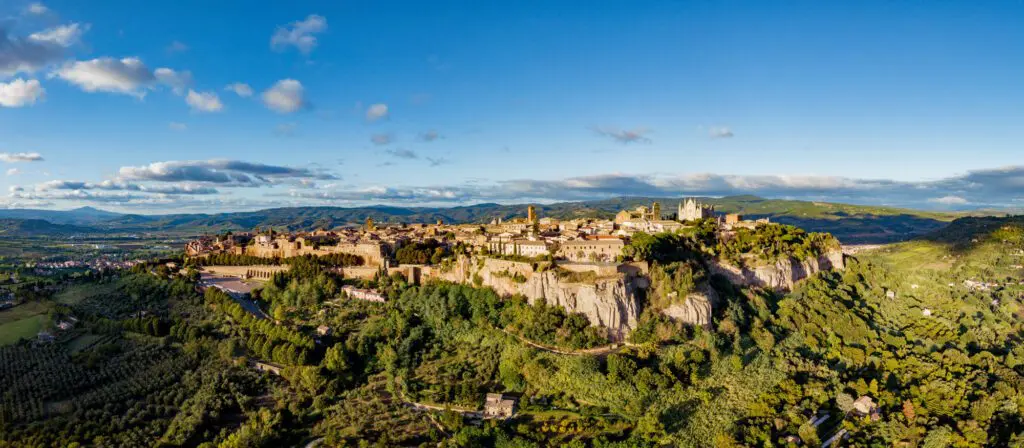A fresco depicting Saint Anthony the Abbot in the Church of the Saints Peter and Paul in Città della Pieve
In Città della Pieve, in the Church of the Saints Peter and Paul that dated back to the thirteenth century, in the very first years of the sixteenth century Perugino painted a fresco showing Saint Anthony the Abbot, between the Saints Paul the Hermit and Marcel.
The Church of the Saints Peter and Paul in Città della Pieve
The church was built in one of the most scenic areas of the place, whence you will be able to admire the Valdichiana valley underneath while in front of you there stand out Mount Cetona and some little towns of Tuscany: Chiusi, Chianciano, Montepulciano. The church was headquarters to the Brotherhood of the Disciplinati (penitents) of the Holy Savior, and up until 1815 was dedicated to Saint Anthony the Abbot.
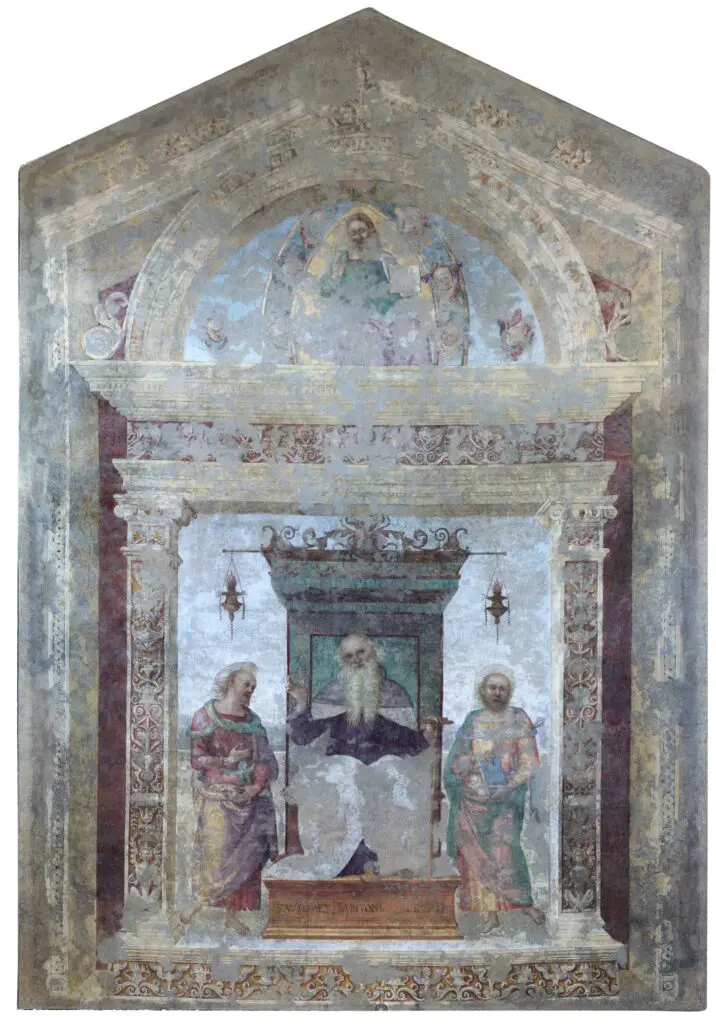
The fresco: composition
Perugino painted this fresco, depicting Saint Anthony the Abbot together with the Saints Paul the Hermit and Marcel, on the back wall in the building. As a matter of fact, it is a faux altarpiece, square-shaped and surmounted by a lunette. Both sides of it are embellished with grotesques, a peculiar type of painted decoration that here also works as a frame around the fresco. This kind of painted frame, which dated back to the Roman Era, would in fact be rediscovered and reused by the Renaissance masters.
In the middle, Saint Anthony the Abbot between Saint Paul the Hermit and Saint Marcel
In the main scene Saint Anthony the Abbot is depicted in the middle, seated on a refined raised throne out of which two lamps are hanging. Looking directly at “us,” the saint raises his right hand while the left lies on a staff, an object usually associated with him in the history of art. The Abbot – as an inscription at the base of the throne indicates – is flanked by the Saints Paul the Hermit and Marcel.
In the upper lunette Perugino showed the blessing Christ encircled by putti, i.e. naked and winged children as can be seen in most of his works of sacred art.
The damages caused by the 1861 earthquake
In 1861 an earthquake shook the town, causing many damages to the church too, and consequently to the fresco. What remained of it was transferred to canvas, and later on, restored. The marks of the earthquake, however, are still clearly visible, especially wide losses of pigments, that makes it now more difficult to detect details and appreciate the whole. In spite of this, it still is a fine example of Perugino’s art in his late years.
